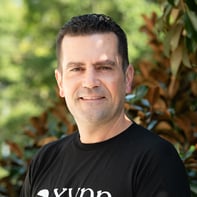What Does It Take to Be Chief Investment Officer of a Fee-Only Firm?
Share this
If you are reading this, it is very likely that you are a financial planner who cares deeply about the well-being of your clients and who covers a diverse and comprehensive array of personal finance-related disciplines. It’s also likely that you have a lot going on in your life, like everything it takes to grow and run your practice. Those two categories of to-dos alone are likely to keep you VERY busy. This post is meant to give you an overview of the role of Chief Investment Officer and all of the responsibilities that come along with the title. Having a realistic understanding of the role will help you think about how you approach investments in your practice and when it might make sense to get some of it off your plate.
What is a CIO?
A Chief Investment Officer (CIO) is the person responsible for overseeing an organization’s investments and investment policies. For small organizations, the CIO might also be the person actually managing the investments, trading and rebalancing portfolios, etc.
According to Schwab’s 2021 compensation study, which included responses from 1,036 independent RIAs, 73% of firms’ lead investment/portfolio managers had ten years or more of investment experience; 39% had 20 years or more. 41% of them were CFA Charterholders, and their median compensation was $177k/yr (plus equity at 33% of the firms). While the firms in this survey may not sound like your practice, it’s worth considering that they may be your competition. Compensation for CIOs is even higher.
Generally speaking, the prototypical CIO has a degree in finance or economics (maybe an MBA), is details and numbers-driven, has a strong analytical background, is adept at designing efficient systems, and is typically direct and thorough in communications (according to a sample job description found on TD Ameritrade Institutional). Contrast the above characteristics with some of the important characteristics of a great planner: listening skills, empathy, people and relationship skills. Obviously, many planners can exhibit all of those characteristics, but most of those we know who love the relationship aspects of their profession aren’t interested in the analytical systems-building part of the business.
CFA vs. CFP
If you aren’t familiar with the CFA (Chartered Financial Analyst) designation, its roots date back to 1947, with the purpose of formalizing and advocating for financial analysis as a profession, and maintaining a strict code of conduct, effectively a fiduciary oath. To receive the designation, the candidate must successfully pass three six-hour exams covering topics like ethics, economics and capital markets, corporate finance, statistics, securities analysis, and others. They must also have four years of investment decision-making experience and at least two reference letters. For those of you familiar with the CFP (Certified Financial Planner) designation, you will easily recognize that they are very different bodies of study. We know many planners who are solid investors, it’s just more of a question of how many different disciplines a person can cover in-depth.
What does the CIO really do?
In larger firms, the CIO might oversee a team that handles the following subset of responsibilities, but in smaller firms, they are likely doing these things themselves:
- Setting overall investment philosophy of the firm
- Portfolio construction
- Product selection and evaluation
- Understanding and navigating the economic and market environment
- Setting capital market assumptions for the planning process
- Dealing with product wholesalers
- Writing commentary and position papers to support the firm’s strategies
- Responding to client questions
- Trading portfolios
- Performance evaluation
- Documentation
- Compliance requirements
- Choosing the tools needed to do the analysis, trading, etc.
- The list goes on… but let’s dive into what a few of these mean
Some of the considerations for investment philosophy and product selection for the firm:
- Will we stick to publicly-traded stocks and bonds or dive into alternatives?
- Will we be globally diversified or US-centric?
- How do we appropriately benchmark to our choice?
- Will we use individual securities, mutual funds, or ETFs?
- What about direct indexing?
- Separately Managed Accounts (SMAs)?
- Are we sufficiently knowledgeable about trading ETFs successfully?
- Do we believe in active or passive management, “systematic active,” “quantimental,” or quantitative indexing?
- Maybe a blend, but which approaches work in each asset class?
- Will we be strategic or tactical?
- If tactical, what will we base our signals on? Fundamental? Technical? Gut instinct?
- Will we follow ESG, SRI, or faith- or values-based principles?
- Will we have separate portfolios for tax-sensitive clients?
- How should we work around transaction fees at our custodian?
- Are we even using the optimal custodian for our client base and investment approach?
Regarding portfolio construction, product selection, and which tools to use:
- Do we limit our fund usage to a handful of managers?
- Or are we willing to accept phone calls from the ~10,000 mutual funds in the US?
- Can we keep up with oversight of the funds and ETFs we use?
- How and how often will we review our overall portfolio decisions? We have to look at our results with an objective lens:
- Did changes in the yield curve have the anticipated impact on our bond portfolio? What about changes in credit spreads and market sentiment?
- Did the portfolio appropriately weather geopolitical events, or were we unknowingly exposed to certain risks?
- Are our clients tolerant of performance that deviates from well-known benchmarks?
- Are we adequately positioned to whether inflation?
- How and how often will we evaluate holdings? Answering questions like:
- Is performance versus a benchmark or peer group a better reference point?
- Is there a nuance to my fund that will always cause its performance to be different from its peers or benchmark?
- For example, does my mid-cap fund track an index that considers smaller companies as midcaps?
- Will we pay the five figures per year to have Morningstar Direct?
- Will we use their qualitative analyses? How? How do we know they aren’t biased?
- How often will we actually speak with the fund manager or someone actually involved in management, not just
a salesperson?
Considerations around commentary, position papers, and other outbound investment-related communications:
- Clients like to know that you are paying attention to the markets and their portfolio
- Quarterly market and economic commentary, customized to your philosophy, is typically appreciated
- But the value of frequent portfolio reporting is debatable; sometimes, it focuses clients on the short-term
- Being able to proactively communicate around market events such as the various impacts of COVID and Russia’s invasion of Ukraine
- The CIO should always start their day with at least a scan of the headlines. You never want your client to ask how you feel about something important you didn’t even know about
- On that note, make sure you are getting your information from a reliable information source and that you understand its biases
If you are doing portfolio management:
- Does your custodian offer a free rebalancing tool, such as TD’s iRebal?
- If not, will you just use spreadsheets?
- Or pay for a high-powered tool like Orion, Tamarac, or Advisor Peak?
- These tools can require a lot of understanding and programming upfront, not to mention proper usage to prevent unintended consequences.
- Can your firm afford to hire a dedicated trader?
- How do you set and implement policies like:
- Rebalancing frequency and thresholds
- Daily or weekly cash reviews
- Dividend reinvestment
- Tax Loss Harvesting
- Asset location
- Withdrawal order
Financial planners are likely qualified to make most or all of these decisions and implement them, but should they be spending time on this? We would argue that it would be a more effective use of their time to spend it with new and prospective clients, or studying how changing tax or estate-planning laws can impact their clients, or working on growing their business, among other tasks that can’t really be outsourced.
What is the alternative to doing all of this yourself?
TAMPs (Turnkey Asset Management Platforms) like XY Investment Solutions exist and continue to gain popularity because they are a great solution for advisors who don’t want to do some or all of what we’ve laid out above. Imagine being able to outsource the majority of it and never having to wake up in a cold sweat worried that you haven’t reviewed a holding or account in a while or that maybe you traded the wrong ticker. Here are some of the features of a TAMP that advisors appreciate not having to think about:
- Qualified investment professional(s), likely CFA Charterholders, at the center of the investment decision-making process
- No more wholesalers’ calls
- Market and economic commentary (in many cases) ready to be white-labeled as your firm’s own
- Automated (or at least out of the advisor’s hands) portfolio management and rebalancing, with objective parameters such as
- Daily reviews for rebalancing and cash management using stated thresholds
- Trade cost minimization
- Capital gain minimization
- Monitoring for and preventing short-term redemption fees
- (In some cases) household rebalancing
- ETF trading best practices (we highly encourage you to check out Vanguard’s guidelines on ETF trading if you use ETFs in your practice)
In this post, we laid out a number of things for advisors to think about if they want to keep being their firm’s Chief Investment Officer. This is by no means a complete job description, but hopefully, it gave you some things to think about or consider doing if you weren’t already. Chances are, though, you were thinking about all the other things on your to-do list that aren’t investment-related. If that’s the case, the takeaway from this blog is “there’s a TAMP for that.”

About the Author
Mario Nardone, CFA
Partner, East Bay Investment Solutions
Mario began his investment career in 1999 with Vanguard mutual funds in Valley Forge, PA, where he consulted institutions and financial advisors on investment policy, portfolio construction, and Exchange-Traded Funds (ETFs). He also held roles as a research analyst, a municipal bond fund specialist, among others during his tenure. In 2003 he earned the Chartered Financial Analyst designation, and he continues to mentor aspiring Charter candidates and young investment professionals.
Mario relocated to Charleston in 2010 to serve as Chief Investment Officer for a financial planning firm before establishing East Bay, the collaborative partner firm of (insert firm name), in 2014. As a Partner at East Bay, Mario serves a select group of Registered Investment Advisor firms as their outsourced Chief Investment Strategist. Responsibilities of this role include continuous oversight of advisor clients’ investments, bespoke strategies for unique situations, client communications, and more.
Mario is Past President of CFA Society South Carolina and Former Chairman of the College of Charleston Finance Department Advisory Board. His approach to investments and the industry has been featured in Investment News, NAPFA Advisor Magazine, South Carolina Public Radio, and other publications and media outlets.
Mario enjoys early morning basketball games, the Charleston beaches and restaurant scene, and spending summers in coastal Maine. He is an avid world traveler and SCUBA diver, but also enjoys the simpler joys of life with his wife Piper, their daughter Pepper, and son Santino.
Learn more and connect with Mario on LinkedIn
Share this
- Advisor Blog (720)
- Financial Advisors (243)
- Growing an RIA (128)
- Business Development (94)
- Digital Marketing (94)
- Marketing (91)
- Community (82)
- Start an RIA (76)
- Coaching (73)
- Running an RIA (72)
- Compliance (70)
- Client Acquisition (68)
- Technology (67)
- Entrepreneurship (64)
- XYPN LIVE (64)
- Fee-only advisor (49)
- Sales (49)
- Bookkeeping (46)
- Client Engagement (45)
- Practice Management (44)
- XYPN Books (43)
- Scaling an RIA (42)
- Investment Management (41)
- Client Services (31)
- Employee Engagement (31)
- Lifestyle, Family, & Personal Finance (31)
- Financial Education & Resources (30)
- Market Trends (25)
- Journey Makers (23)
- Process (18)
- Niche (13)
- SEO (9)
- Career Change (8)
- Partnership (8)
- Transitioning Your Business (7)
- Sapphire (6)
- Persona (4)
- Transitioning To Fee-Only (4)
- Emerald (3)
- Social Media (3)
- Transitioning Clients (3)
- RIA (2)
- Onboarding (1)
Subscribe by email
You May Also Like
These Related Stories

Why Charging Separately for Financial Planning and Investment Management Makes Sense
Jun 25, 2014
5 min read

One Fee, Two Services: Combining Investment Management and Financial Planning Fees
Mar 7, 2019
4 min read




